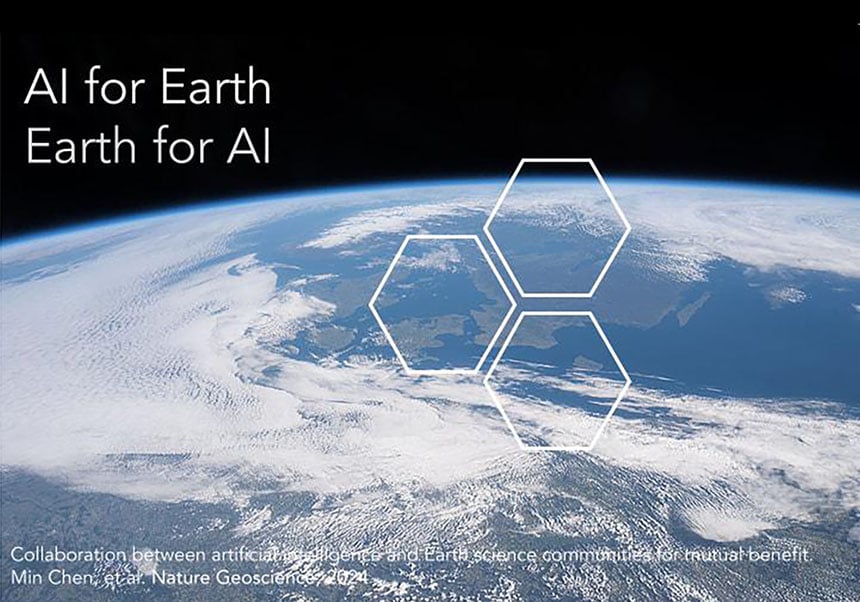An international research team with the participation of the University of Valencia has published an article in the journal Nature Geoscience that calls for a more collaborative and balanced approach between artificial intelligence and Earth sciences. The study advocates a new field of study -AIXES (Artificial Intelligence and Earth Sciences)- that will enhance both fields and be beneficial in addressing future environmental challenges
The increasing application of artificial intelligence (AI) in a wide range of sectors presents great opportunities for progress in the Earth sciences. Even so, the risk of devaluation of the methods and essential knowledge of geosciences exists, in the absence of an adequate interdisciplinary collaboration framework to address environmental challenges.
Under the title Towards scientific synergy between AI and Earth sciences, the article published in Nature Geoscience underlines the need to push forward this interdisciplinary field that integrates AI advances and Earth sciences expertise and knowledge.
The article discusses how AI can improve geospatial data collection, processing and analysis, while warning about the risks of relying exclusively on AI without considering traditional Earth science methodologies. According to the authors, this could lead to misinterpretations and untenable decisions.
"The relevance of our research lies in the ability of AI not only to process huge volumes of data but also to generate new ways of understanding and predicting complex Earth system processes"
“The use of AI in Earth sciences has often been seen as a magic bullet for all challenges, which can result in a dangerous imbalance,” says Min Chen, a researcher at Nanjing Normal University (China) and co-lead author of the study with Zhen Qian, a scientist at the Potsdam Institute for Climate Impact Research (Germany).
“The relevance of our research lies in the ability of AI not only to process huge volumes of data but also to generate new ways of understanding and predicting complex Earth system processes. This kind of interdisciplinary approach is crucial to develop more effective and sustainable solutions to the environmental challenges we face today,” adds Gustau Camps-Valls, coordinator of Image and Signal Processing, a research group housed at the Image Processing Laboratory (IPL), located at the Parc Científic de la Universitat de València, and one of the authors of the article.
The study advocates the development of this new field of research called AIXES, aimed at exploiting the mutual advantages of both disciplines and improving predictive capabilities in climate modeling, natural disaster prevention and understanding of complex geophysical phenomena, incorporating ethical and sustainable principles in the development and use of AI technologies.
The publication of the article in Nature Geoscience also aims to inspire future research and policies that promote a more responsible and effective use of artificial intelligence in science and society.
Towards scientific synergy between AI and Earth sciences. Min Chen, Zhen Qian, Niklas Boers, Felix Creutzig, Gustau Camps-Valls, Klaus Hubacek, Christophe Claramunt, John P. Wilson, Stefano Nativi, Anthony J. Jakeman, R. Dietmar Müller, Michael Batty, Chenghu Zhou, Fahu Chen, Qiao Wang, Fan Zhang, C. Michael Barton, Josef Strobl, Michael Meadows, Carlo Ratti, Philipp Hess, Qingsong Xu, Zhixin Zhang, Qiushi Gu, A-Xing Zhu, Hui Lin, Linwang Yuan & Guonian Lü


